
Marcelo Bratke (born September 6, 1960) is a Brazilian pianist.

Marcelo Bratke (born September 6, 1960) is a Brazilian pianist.
Bratke began his piano studies at the age of 14 with Zélia Deri. [1]
Two years later he debuted with the São Paulo State Symphony Orchestra (OSESP) under the baton of conductor Eleazar de Carvalho, receiving the Revelation Pianist Award from the APCA (São Paulo State Association of Art Critics). [2]
He made his European debut at the Salzburg Festival in 1988 [3] and has since performed regularly in concert halls in Brazil and abroad, such as Sala São Paulo in Brazil, [4] Wigmore Hall in London, [5] Suntory Hall in Tokyo, [6] the Kozerthaus Berlin [7] and Carnegie Hall in New York, [8] among others.
Bratke has performed alongside conductors such as Alexander Lazarev, Isaac Karabtchevsky, Álvaro Cassuto, Eleazar de Carvalho, John Neschling, Roberto Minczuk, João Carlos Martins, among others. Also, he participated in crossover projects with Julian Joseph, Naná Vasconcelos, Thiago Soares, Marco Gambino, Milton Nascimento, Dori Caymmi, Fernanda Takai and Sandy.
In 2008, Marcelo Bratke founded the “Camerata Brasil”, an orchestra of young musicians from underprivileged areas of Brazilian society. [9] They performed around 300 concerts in Brazil, Argentina, Japan, the United Kingdom, Serbia, South Korea, the Netherlands and the United States, where they performed in a concert which honored Heitor Villa-Lobos at Carnegie Hall in New York. [10]
In partnership with the visual artist Mariannita Luzzati, he created the project “Cinemúsica”, conceived to be presented in Brazilian prisons and later taken to concert halls in Europe, Brazil and the United States. [11]
In 2004, Bratke developed the Villa-Lobos Worldwide Project, which promotes the composer through actions which included the recording of his complete work for solo piano in partnership with the British music label Quartz Music, concerts in Brazil and abroad and radio/television shows. [12]
As a radio and television host, Marcelo Bratke created and hosts since 2015 the weekly program “Alma Brasileira” (Brazilian Soul) on the Brazilian radio station Cultura FM. In 2017, he directed and hosted the 8 episode TV documentary series about Heitor Villa-Lobos entitled “O Tempo e Música - Villa-Lobos” for Arte 1 TV channel. [13] In 2020 he created a series of 20 classical music vignettes for Bandeirantes TV channel and in 2021 he directed and hosted a series of documentaries for Arte 1 channel named “Música no meu Jardim” (Music in my Garden) about Bach, Mozart, Beethoven and Chopin. [14]
In 2017, Marcelo Bratke received the Order of Cultural Merit (title: Commander) granted by the President of the Republic of Brazil Michel Temer and the Ministry of Culture for his project dedicated to Heitor Villa-Lobos. [15]
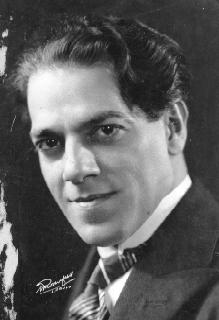
Heitor Villa-Lobos was a Brazilian composer, conductor, cellist, and classical guitarist described as "the single most significant creative figure in 20th-century Brazilian art music". Villa-Lobos has become the best-known South American composer of all time. A prolific composer, he wrote numerous orchestral, chamber, instrumental and vocal works, totaling over 2,000 works by his death in 1959. His music was influenced by both Brazilian folk music and stylistic elements from the European classical tradition, as exemplified by his Bachianas Brasileiras and his Chôros. His Etudes for classical guitar (1929) were dedicated to Andrés Segovia, while his 5 Preludes (1940) were dedicated to his spouse Arminda Neves d'Almeida, a.k.a. "Mindinha". Both are important works in the classical guitar repertory.
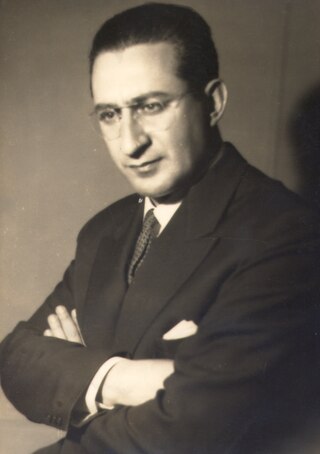
Mozart Camargo Guarnieri was a Brazilian composer.

Rudepoêma is a composition by Heitor Villa-Lobos. It was written in Rio de Janeiro from 1921 to 1926 and is the largest and most challenging work Villa-Lobos wrote for the solo piano. It is in one continuous movement and runs about 19–20 minutes. The piece has been described as "Le Sacre du printemps meets the Brazilian jungle". For the title of this work, as he also did for other compositions, such as Vidapura and Momoprecoce, Villa-Lobos compounded two words together: rude, meaning "rude", "coarse", "uncultured", "discourteous", and poema, "poem". However, the score's dedicatee, Arthur Rubinstein, explained, "The 'Rude' of the title did not have the English meaning. In Brazil it meant 'savage'. When I asked him if he considered me a savage pianist, he said excitedly, 'We are both savage! We don't care much for pedantic detail. I compose and you play, off the heart, making the music live, and this is what I hope I expressed in this work'". Rudepoêma was later orchestrated by the composer, and premiered under his baton in Rio de Janeiro on July 15, 1942.
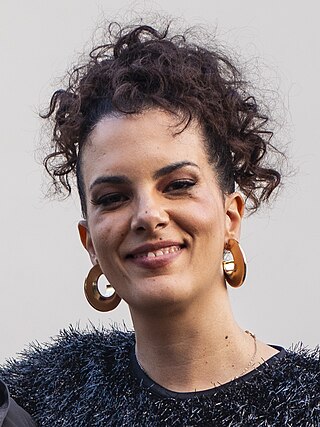
Maria do Céu Whitaker Poças, known professionally by the mononym Céu, is a Brazilian singer-songwriter whose first American album was released on the Six Degrees Records label in April 2007.
Sonia Rubinsky is a Brazilian classical pianist.

Chôros No. 2 is a duet for flute and clarinet written in 1924 by the Brazilian composer Heitor Villa-Lobos. It is part of a series of fourteen numbered compositions collectively titled Chôros, ranging from solos for guitar and for piano up to works scored for soloist or chorus with orchestra or multiple orchestras. and in duration up to over an hour. Chôros No. 2 is the shortest in the series, a performance lasting only about two-and-a-half minutes.

Chôros No. 3, "Pica-pau" (Woodpecker) is a work for male choir or instrumental septet, or both together, written in 1925 by the Brazilian composer Heitor Villa-Lobos. It forms a part of a series of fourteen numbered compositions collectively titled Chôros, ranging from solos for guitar and for piano up to works scored for soloist or chorus with orchestra or multiple orchestras. and in duration up to over an hour. Chôros No. 3 is one of the shorter members of the series, a performance lasting about three-and-a-half minutes.

Chôros No. 7, subtitled "Settimino" (Septet), is an instrumental septet written in 1924 by the Brazilian composer Heitor Villa-Lobos. It is part of a series of fourteen numbered compositions collectively titled Chôros, ranging from solos for guitar and for piano up to works scored for soloist or chorus with orchestra or multiple orchestras, and in duration up to over an hour. Chôros No. 7 is of modest length, a performance lasting about eight-and-a-half minutes.

Chôros No. 10 is a work for chorus and orchestra written in 1926 by the Brazilian composer Heitor Villa-Lobos. It is part of a series of fourteen numbered compositions collectively titled Chôros, ranging from solos for guitar and for piano up to works scored for soloist or chorus with orchestra or multiple orchestras, and in duration up to over an hour. Chôros No. 10 is of moderate length, one performance recorded by the composer lasting just under thirteen minutes.

Chôros No. 12 is an orchestral work written between 1925 and 1945 by the Brazilian composer Heitor Villa-Lobos. It is part of a series of fourteen numbered compositions collectively titled Chôros, ranging from solos for guitar and for piano up to works scored for soloist or chorus with orchestra or multiple orchestras, and in duration up to over an hour. Chôros No. 12 is one of the longest compositions in the series, a performance lasting about 35 minutes.

Chôros No. 6 is an orchestral work written between 1925 and 1942 by the Brazilian composer Heitor Villa-Lobos. It is part of a series of fourteen numbered compositions collectively titled Chôros, ranging from solos for guitar and for piano up to works scored for soloist or chorus with orchestra or multiple orchestras, and in duration up to over an hour. Chôros No. 6 is one of the longer compositions in the series, lasting about 25 minutes in performance.

Chôros No. 8 is a work for orchestra and two pianos, written in 1925 by the Brazilian composer Heitor Villa-Lobos. It is part of a series of fourteen numbered compositions collectively titled Chôros, ranging from solos for guitar and for piano up to works scored for soloist or chorus with orchestra or multiple orchestras, and in duration up to over an hour. A recording of Chôros No. 8 conducted by the composer lasts 22 minutes.

Chôros No. 4 is a quartet for three horns and trombone, written in 1926 by the Brazilian composer Heitor Villa-Lobos. It forms a part of a series of fourteen numbered compositions collectively titled Chôros, ranging from solos for guitar and for piano up to works scored for soloist or chorus with orchestra or multiple orchestras, and in duration up to over an hour. Chôros No. 4 is one of the shorter members of the series, a performance lasting about five-and-a-half minutes.
Bernette Epstein, known as Yara Bernette, was a Brazilian classical pianist. Considered one of Brazil's foremost pianists of the twentieth century, she achieved international renown for her performance of Classical and Romantic works, notably those of Rachmaninoff, Mozart, Chopin, Debussy, and Brazilian composer Heitor Villa-Lobos, in concerts in Brazil, Europe, and the United States. She chaired the piano department at the Hochschule für Musik und Theater Hamburg, Germany, from 1972 to 1992.
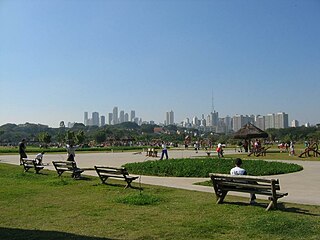
Villa-Lobos State Park is a park in São Paulo, Brazil. It is named after composer Heitor Villa-Lobos, and is located next to Pinheiros River. It was created in 1989 on a site that was previously used as a rubbish tip. The park now has around 37,000 trees. It hosts the annual Aberto de São Paulo.

Ernani Braga was a Brazilian composer, pianist and conductor, concerned to belong to the second generation of the nationalists in music. He composed works for voice, choir, orchestra and piano. He is little known outside the South America. Antônio Francisco Braga (1868–1945), with whom he is sometimes confused, was his teacher and friend. Among Ernani Braga's pupils was Camargo Guarnieri.

Roberto Minczuk is a Brazilian conductor, maestro of the São Paulo Municipal Symphony Orchestra, music director of the New Mexico Philarmonic laureate of the Calgary Philharmonic Orchestra, artistic director of the Campos do Jordão Winter Festival, and conductor emeritus of the Brazilian Symphony Orchestra.
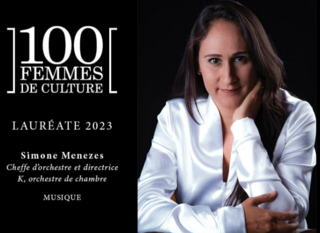
Simone Menezes is an Italo-Brazilian conductor based in France.

The Villa-Lobos Museum is a museum in Rio de Janeiro, Brazil, that is dedicated to exhibiting artifacts related to the composer Heitor Villa-Lobos.
Mariannita Luzzati is a Brazilian visual artist from São Paulo, recognized for her extensive study of landscapes.